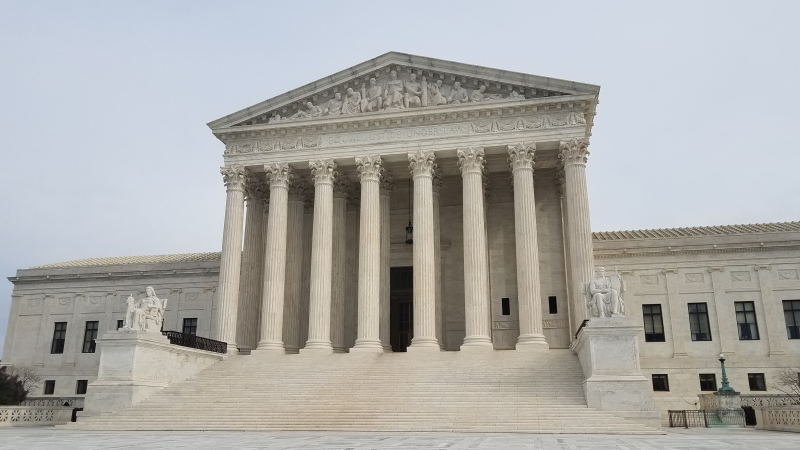Buttigieg busted? Federal data shows number of rail wrecks with hazardous materials declining
Hazmat accident rate declined by around 55% while the general train accident rate declined by around 10% over last decade.
While rail wrecks like the one in East Palestine, Ohio, garner the headlines and turn the national dialogue to regulations, federal data shows that such mishaps have declined over the past three decades.
Numbers from the Bureau of Transportation Statistics show that since 1990, rail incidents have accounted for about 5% of the more than 519,100 incidents involving hazardous materials. Most incidents (87.6%) were classified as “highway incidents.”
The numbers come as Transportation Secretary Pete Buttigieg has suggested train derailments are common, and additional regulations are needed.
Between 2012 and 2021, the most recent numbers available, the BTS classified 5,432 incidents involving hazardous materials as rail incidents. That is down from 7,518 in the previous 10 years (2002-2011) and 10,786 in the previous 10 years (1992-2001).
“FRA data demonstrates declines in total train accidents for decades,” Benjamin Dierker, executive director at Alliance for Innovation and Infrastructure, told The Center Square via email. FRA is an acronym for the Federal Railroad Administration.
“In the past 10 years," he wrote, "hazardous materials have actually fared better than general rail movement, with the hazmat accident rate declining by around 55% while the general train accident rate declined by around 10%.
“Accidents like the one in East Palestine are very rare, in part because releasing and burning a hazmat payload is incredibly rare. Over the past two decades, fewer than 1% of all train accidents have resulted in a release of hazardous materials.”
A Feb. 3 Norfolk Southern Railway derailment has put railroad safety — and the transportation of hazardous materials — under increased scrutiny. Buttigieg has excoriated the railroad and the industry and promised the federal government would push reforms.
According to the NTSB, Norfolk Southern train 32N, a general merchandise freight train, was traveling from Madison, Illinois, to Conway, Pennsylvania, with 149 cars, including 20 cars with hazardous materials among its cars. A total of 38 cars derailed, including 11 tank cars with hazardous materials.
A preliminary NTSB report indicates an “overheated wheel bearing” likely led to the derailment. Despite the content of its cars, the train was not designated as a “high hazardous material train.”
However, a spokeswoman for the Transportation Trades Department, AFL-CIO, told The Center Square via email that “while federal data shows that the total number of incidents has declined, the rate has increased. The total number itself should decrease because companies are running fewer (and longer) trains.”
For example, according to the union, at Norfolk Southern, the rate of yard accidents per yard/switching mile has more than doubled from 8.459 in 2013 to 22.07 in 2022.
The East Palestine wreck has brought the railroad industry practice of Precision Scheduled Railroading to the forefront. There is no single definition of PSR, which generally aims to increase railroads’ efficiency and reduce their costs, but it may include longer trains and fewer locomotives and employees per train.
Railroad unions want railroads to end PSR and have called on the federal Department of Transportation and the Federal Railroad Administration to implement regulations to end PSR.
The Association of American Railroads notes that nearly all hazmat shipments (99.9%) reach their destination without incident. It also notes that over the last 10 years, less than 1% of all train accidents have resulted in a hazmat release.
That hasn’t allayed the concerns of officials in communities along rail lines, who have long expressed concerns about what travels via rail through their jurisdictions. This week, a group of Ohio House members said they want federal and state officials to consult with them in the aftermath of the East Palestine derailment. Pennsylvania lawmakers are both talking about it and hearing about it, too.
Local, state and federal officials have long vowed to hold railroads accountable following wrecks. The crash in Ohio is no different.
For example, a series of derailments on the Northeast Corridor in the 1970s, including a June 1977 Conrail freight train derailment in Metuchen, New Jersey, sparked congressional hearings. A total of 17 cars derailed in the Metuchen mishap, including at least one car hauling chlorine gas; no one was killed or hurt in the derailment, congressional records show.
Since 1990, there have been 462 deaths resulting from hazardous materials mishaps. Rail accounted for 21, or about 4.5%, of those fatalities. Highway incidents accounted for 71% of the deaths, while air mishaps accounted for 23.8%, though all 110 deaths since 1990 stem from a May 1996 ValuJet crash.













